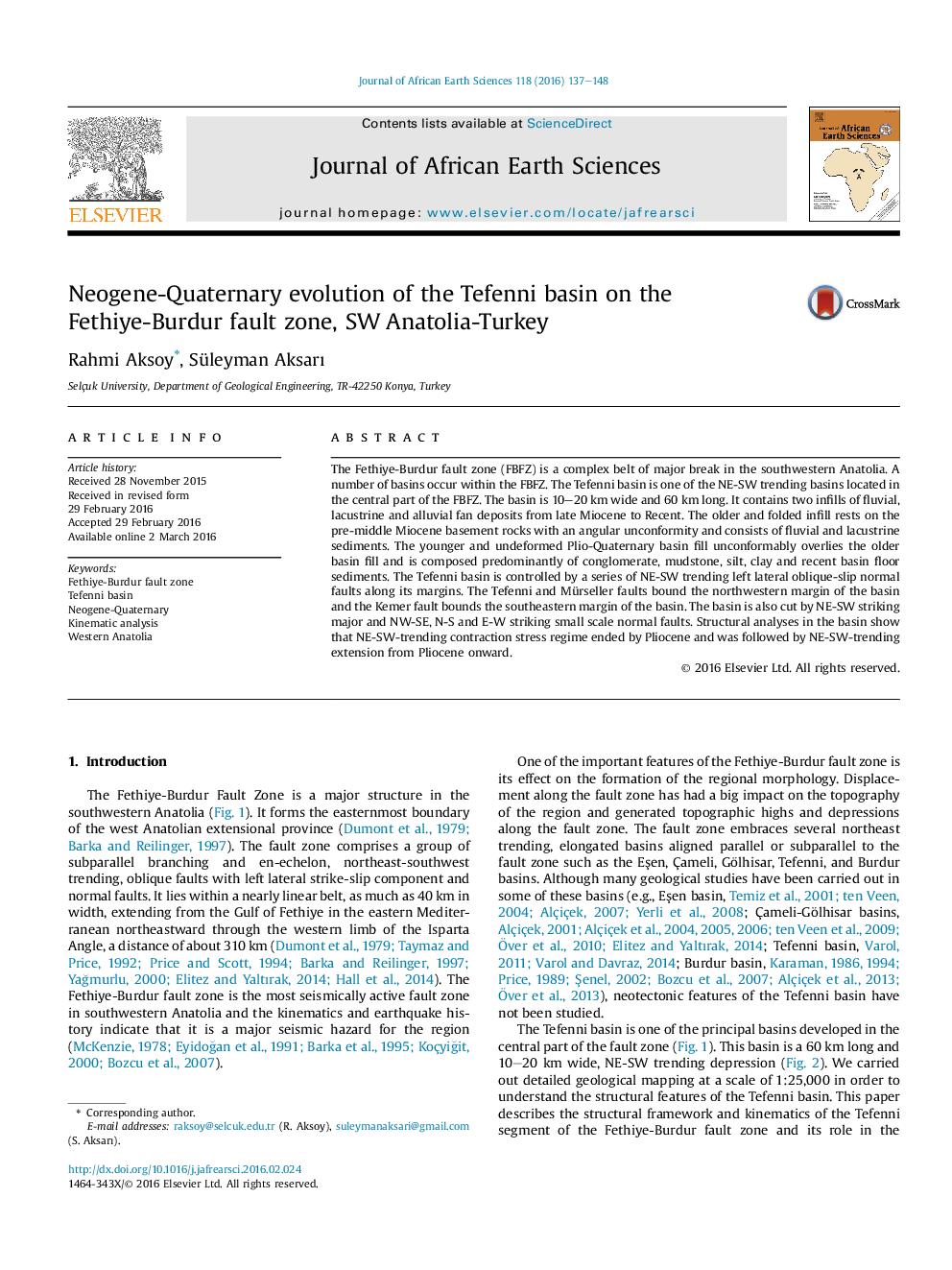| Article ID | Journal | Published Year | Pages | File Type |
|---|---|---|---|---|
| 4728431 | Journal of African Earth Sciences | 2016 | 12 Pages |
•Tefenni basin contains infill of middle-upper Miocene-Quaternary sediments.•NE-SW trending sinistral oblique-slip and normal faults main structure of the basin.•Results of fault-slip data analysis are presented from the Tefenni basin.•Two different deformation regimes governed the basin since upper Miocene.•Tefenni basin is a transtensional basin.
The Fethiye-Burdur fault zone (FBFZ) is a complex belt of major break in the southwestern Anatolia. A number of basins occur within the FBFZ. The Tefenni basin is one of the NE-SW trending basins located in the central part of the FBFZ. The basin is 10–20 km wide and 60 km long. It contains two infills of fluvial, lacustrine and alluvial fan deposits from late Miocene to Recent. The older and folded infill rests on the pre-middle Miocene basement rocks with an angular unconformity and consists of fluvial and lacustrine sediments. The younger and undeformed Plio-Quaternary basin fill unconformably overlies the older basin fill and is composed predominantly of conglomerate, mudstone, silt, clay and recent basin floor sediments. The Tefenni basin is controlled by a series of NE-SW trending left lateral oblique-slip normal faults along its margins. The Tefenni and Mürseller faults bound the northwestern margin of the basin and the Kemer fault bounds the southeastern margin of the basin. The basin is also cut by NE-SW striking major and NW-SE, N-S and E-W striking small scale normal faults. Structural analyses in the basin show that NE-SW-trending contraction stress regime ended by Pliocene and was followed by NE-SW-trending extension from Pliocene onward.
